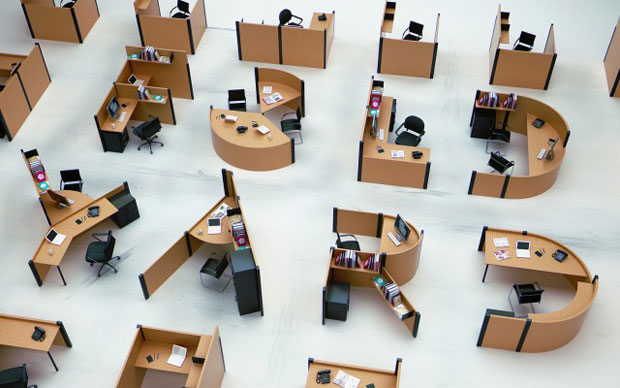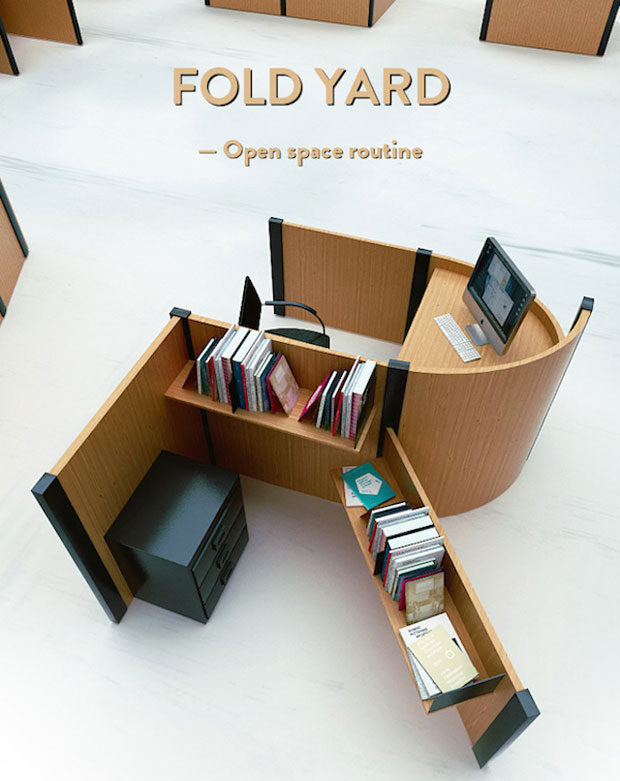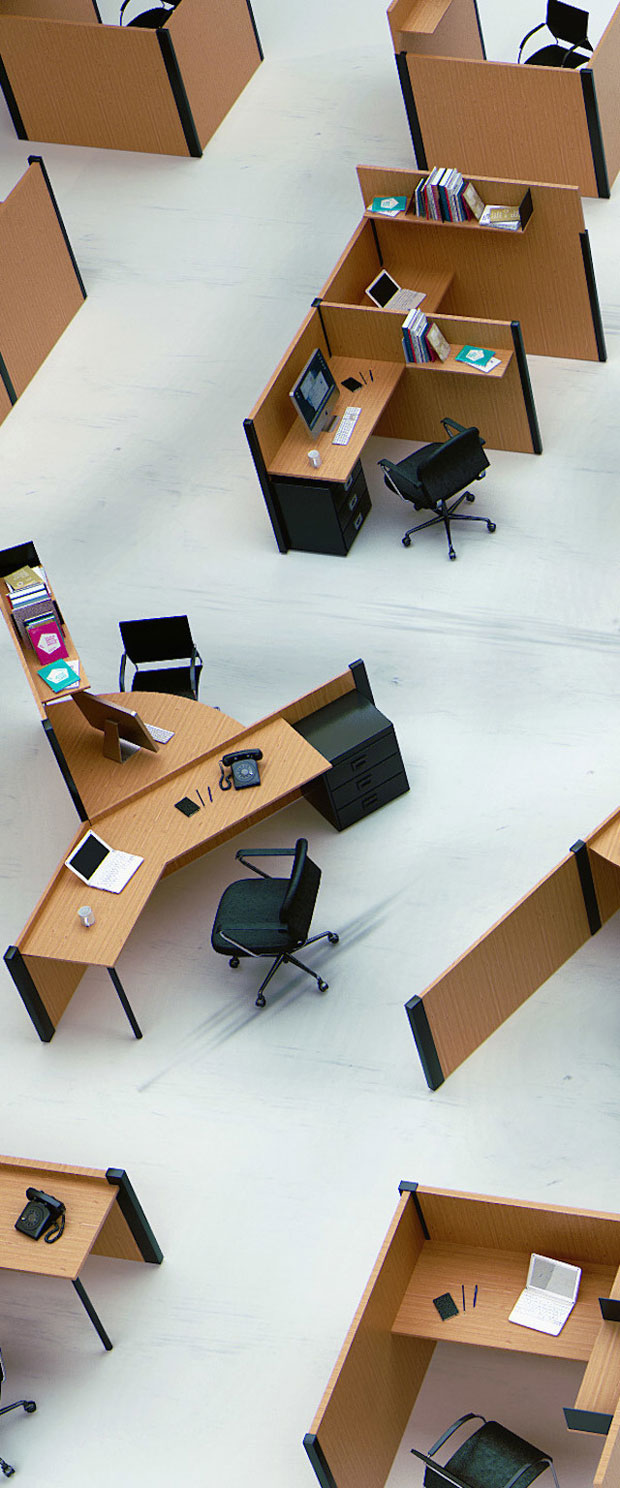
Benoit Challand's A to Z of desks
French designer brings new meaning to the term dead letter office
French 3D artist and illustrator Benoit Challand likes to take a break from his day job servicing clients such as Ogilvy, Nike and Cartier, and play with typography. The aim of his latest such project is the same as many an office designer: boost employee creativity and interaction. But rather than installing colourful sofas on staircases or getting people to have meetings at bar stools, he’s reinvented the workstation.
The concept, called Fold Yard, involves turning letter forms into 26 different workstations. Each unit is made of wood with black accents: the mobile storage unit under or beside the workstation, the table legs, the bookends and the chairs.

Some letters, of course, lend themselves more easily to a work space than others. The ‘D’ comprises a crescent of desks surrounded by low partitions, and the ‘L’ is effectively a conventional L-shaped console. In some instances, the letter accommodates two or more workers, like the ‘O’ and the ‘Y’ – great for all that collaboration so-called knowledge workers are expected to do these days. However, not every letter offers itself up efficiently, so there seems to be a lot of dead space in the cake-slice form of the ‘A’. One for the intern, perhaps.
But space efficiency isn’t Challand’s over-riding theme. He’s more interested in livening up a monotonous office and giving staff something to talk about and even bond over. In a hot-desking company, we can imagine that certain letters would be fought over, while others might find themselves vacant for much of the time.

The effect is most pleasing – from above at least, meaning Fold Yard’s natural habitat would be the ground floor of those vast atrium spaces that big corporates are so keen on. We can imagine staff and visitors would appreciate the design, leaning over the balustrades of their upper storeys (even if the office joker hasn't assembled the desks to spell out something rude about the management).
With all those different shapes it would, of course, be imperitive to pick the correct chair. Luckily we can help there with our great little book A Taxonomy of Office Chairs. Couple it with The Design Book. You can read an interview with that book's editor, Joe Pickard, here.